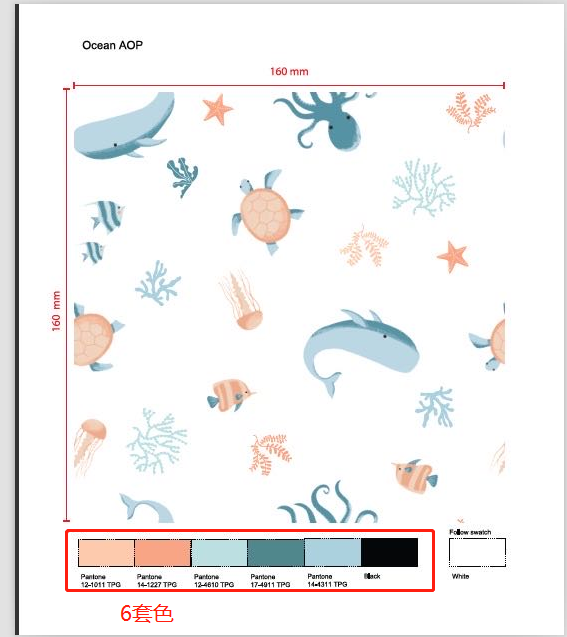
Difference: Digital printing uses computer digital control technology to directly print designs on fabrics, with richer pattern details and color layers.
Advantages: Accurate color, high precision, good repeatability, suitable for small batch production without MOQ, environmentally friendly.
Disadvantages: Relatively high production cost.
Difference: Rotary screen printing is a printing method that prints the printing pattern on screens, and then transfers ink to the fabric by rotating the rotary screen.
Advantages: Lower printing processing cost, good effect, suitable for large-scale production.
Disadvantages: The printing details and color layers are not rich enough, not suitable for complex patterns on textiles, and there is a certain minimum order quantity: generally 1500-2000 meters, and plate-making fees are required, generally 3-500 yuan/color set (if a pattern has 6 colors, then the plate-making fee is 6*300=1800 yuan).
Difference: Flat screen printing is a printing method that uses plain weave fabric as the basis.
Advantages: The printing processing cost is lower than rotary screen printing, and the printing effect is good. Smooth and flat fabrics can better display the printing pattern. Disadvantages: Not suitable for fabrics with texture, higher printing cost, there is a certain minimum order quantity, generally 1500-2000 meters, and plate-making fees are required, generally 3-500 yuan/color set (if a pattern has 6 colors, then the plate-making fee is 6*300=1800 yuan).
Difference: Heat transfer printing is a printing method that prints the printing pattern on thermal film, and then transfers the printing pattern to the fabric through high temperature and pressure.
Advantages: Lower printing processing cost, very fine and durable printing patterns, can be applied to various fabrics.
Disadvantages: The heat transfer printing equipment is relatively expensive, and the printing process requires more time than other methods. There is a certain minimum order quantity, generally 1500-2000 meters, and plate-making fees are required, generally 1600-2000 yuan/color set (if a pattern has 6 colors, then the plate-making fee is 6*1600=9600 yuan).
Difference: Transfer paper printing is a printing method that prints the printing pattern on special paper, and then transfers the printing pattern to the fabric through heat pressing. Advantages: Lower printing processing cost, good printing effect, can be applied to various fabrics.
Disadvantages: Transfer paper can only print one pattern at a time, not suitable for large-scale production. There is a certain minimum order quantity, generally 1500-2000 meters, and plate-making fees are required, generally 1600-2000 yuan/color set (if a pattern has 6 colors, then the plate-making fee is 6*1600=9600 yuan).
Mr Jack(GM)
We woven fabrics manufacturer from china over 16 years,we weave/dye/print ourselves.
Any woven fabrics inquiries please contact us ,we supply one-stop full series woven fabrics service.
Mob/whatsapp/wechat:+8615988150362
Mail: director@sixdragontextile.com
Hangzhou Six Dragon Textile Co.,ltd
http://www.sixdragontextile.com
Contact: Jack Wang
Phone: +86-15988150362
E-mail: gm@sixdragontextile.com
Add: 杭州六龙纺织品有限公司 Yuhang,Hangzhou,Zhejiang,China